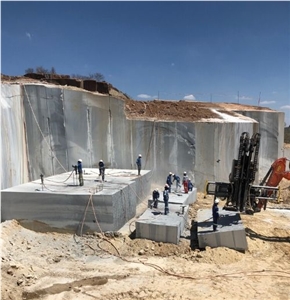Discovering the Charm of Granite Quarry in South Africa Wonders
Discovering the Charm of Granite Quarry in South Africa Wonders
Blog Article
Unearthing the Rich Background and Sustainable Practices of Granite Quarrying
As we depend on the precipice of uncovering the elaborate tapestry of granite quarrying, a journey with time exposes not simply the physical act of extracting rock but likewise the cultural and historic significance woven right into the extremely fabric of this method. From the old beginnings that laid the foundation for modern-day quarrying techniques to the lasting methods that are forming the future of this sector, each carve mark on granite surfaces narrates waiting to be unearthed (granite quarries in south africa). The legacy of granite quarrying extends much past simple removal; it is a testimony to human resourcefulness, strength, and the enduring attraction of this stunning rock
Old Beginnings of Granite Quarrying
Going back to old worlds, the method of quarrying granite has been an essential part of human background and architectural advancement. The earliest proof of granite quarrying go back to old Egypt, where large pyramids and elaborate sculptures were crafted from this durable rock. The Egyptians used primitive devices to extract granite blocks from quarries, showcasing the relevance of this product in their significant buildings.
Progressing in history, the Greeks also made significant payments to the quarrying of granite. The Greeks used granite in different architectural wonders, such as holy places and statuaries, showing their ability in shaping and carving this hardy stone. The Romans even more fine-tuned the strategies of quarrying granite, using advanced tools like chisels and hammers to extract and shape granite for their renowned structures.
With the centuries, the method of quarrying granite has actually developed, with modern-day innovations boosting efficiency while maintaining the classic allure of this all-natural rock - granite quarries in south africa. From ancient civilizations to contemporary home builders, the heritage of granite quarrying remains to shape our world
Development of Quarrying Techniques
The advancement of quarrying strategies has been noted by a continuous development in the direction of higher performance and precision in extracting granite. Early quarrying strategies involved hands-on labor with standard tools such as knives, hammers, and wedges to extract granite blocks from the earth.
Innovations in computer-controlled devices and 3D modeling have enhanced quarrying operations, leading to marginal environmental influence and enhanced sustainability practices. As the demand for granite proceeds to climb, the advancement of quarrying methods stays important to conference industry needs effectively and sustainably.
Cultural Importance of Granite
Granite holds a profound social importance across different worlds due to its long-lasting existence in architectural masterpieces and prized monuments. From the magnificent pyramids of Egypt to the detailed carvings of the Angkor Wat temple in Cambodia, granite has been a product of selection for expressing majesty and longevity in cultural heritage. In ancient Rome, granite columns adorned temples and public structures, symbolizing strength and durability. The social importance of granite extends past its physical qualities; it symbolizes resilience, stability, and timelessness, making it a symbol of withstanding legacies and practices.

Lasting Practices in Quarrying
In the middle of the rich background of granite quarrying and read the article its social importance lies an expanding focus on sustainable techniques within the market. As environmental recognition and problems regarding resource deficiency have actually heightened worldwide, the quarrying industry has actually significantly welcomed sustainable methods to decrease its influence on the environment and bordering neighborhoods.

In addition, recovery and recovery of quarry websites post-extraction are indispensable to lasting techniques. By recovering quarried locations to a natural or useful state, such as producing wild animals habitats or recreational spaces, quarriers can offset the ecological impact of their operations and contribute positively to the regional environment.
Tradition of Granite Quarrying
With a historical background soaked in workmanship and industrial development, what enduring impact has granite quarrying left on the landscape of modern culture? The heritage of granite quarrying goes beyond simple removal methods; it has shaped building wonders, metropolitan landscapes, and social heritage worldwide. The sturdy nature of granite has made it a preferred choice for monoliths, structures, and infrastructure, standing as a testimony to the ability and creativity of quarry workers throughout generations.
In addition, the economic footprint of granite quarrying can not be ignored. The market remains to give employment possibility and drive neighborhood economic climates in regions where granite extraction is widespread. It has additionally spurred technical improvements in quarrying techniques and devices, leading to a lot more efficient and lasting practices.
In terms of sustainability, the tradition of granite quarrying includes initiatives to mitigate ecological influences with improvement projects and liable source monitoring. By balancing financial interests with environmental stewardship, the market makes have a peek at this site every effort to make certain click reference that future generations can remain to take advantage of this long-lasting all-natural resource.
Conclusion

Report this page